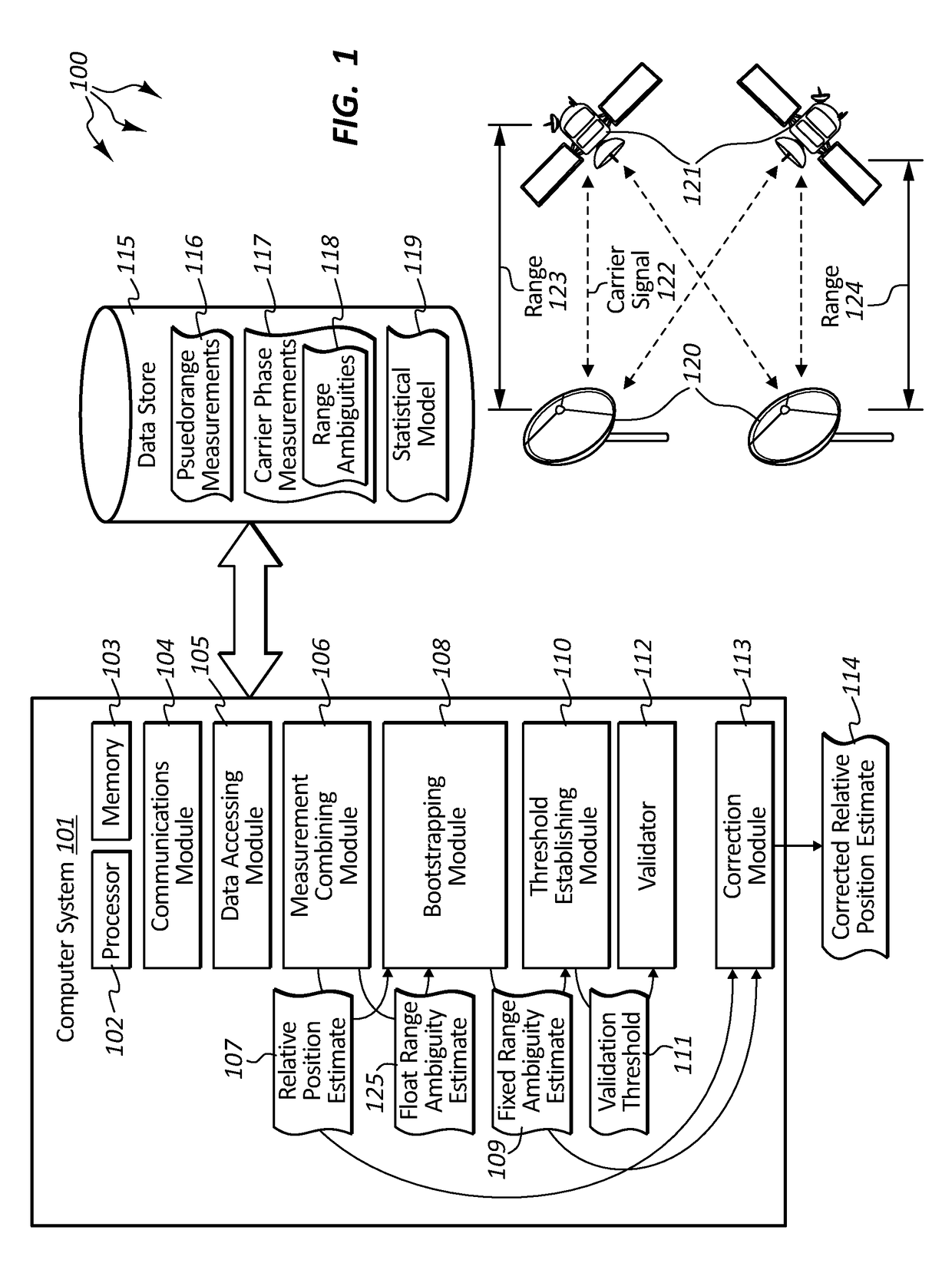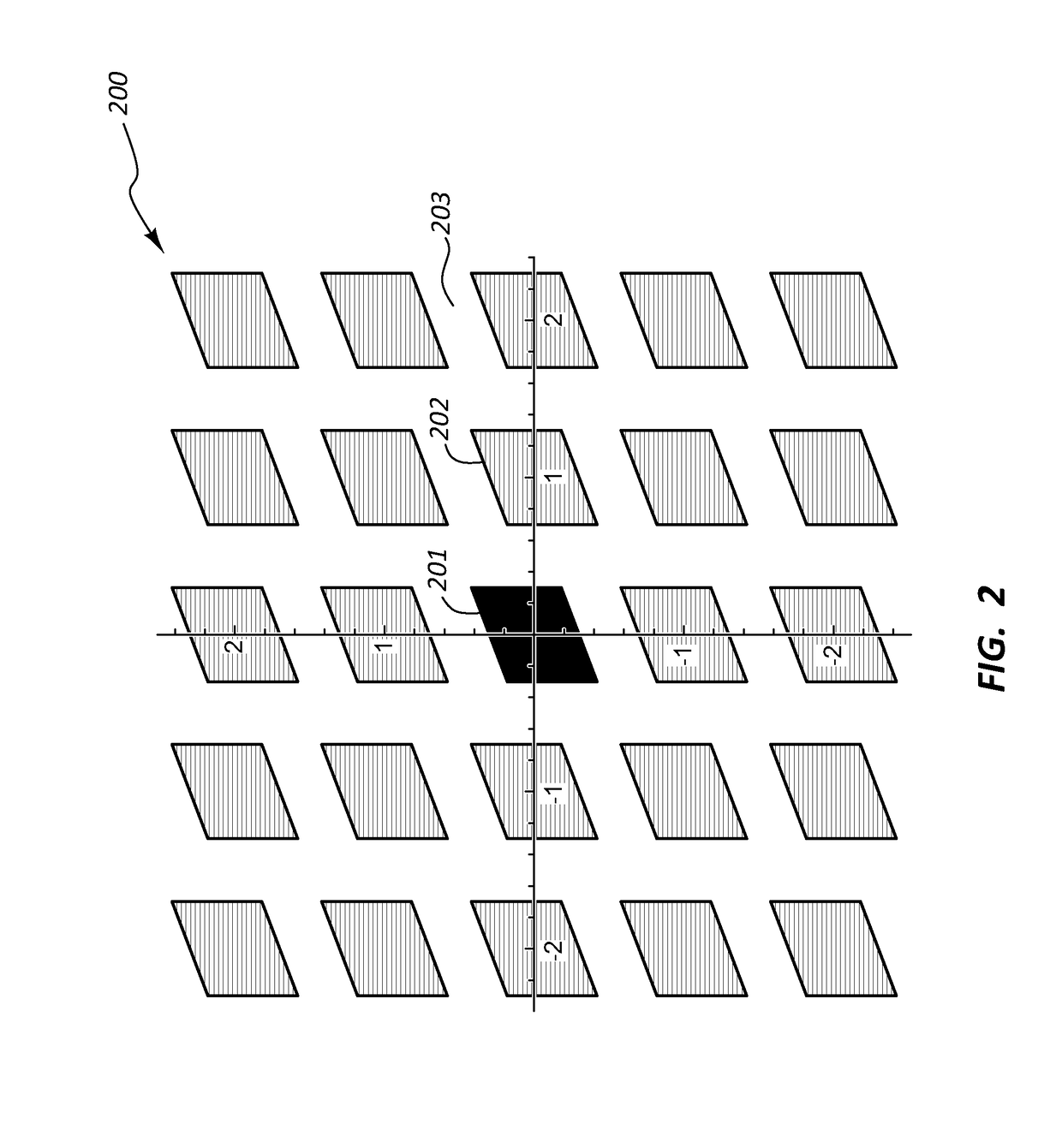Assured validation of carrier-phase integer ambiguities for safety-of-life applications
a carrier-phase integer and ambiguity technology, applied in the field of assurance of carrier-phase integer ambiguities for safety-of-life applications, can solve the problems of large position estimate bias and inability to eliminate the solution of the bias
- Summary
- Abstract
- Description
- Claims
- Application Information
AI Technical Summary
Benefits of technology
Problems solved by technology
Method used
Image
Examples
Embodiment Construction
[0021]As noted above, embodiments described herein are generally directed to performing integer ambiguity validation in carrier phase differential positioning and to calculating a protection level for use in safety-of-life applications. In one embodiment, a computer system accesses a set of double-differenced pseudorange measurements of the ranges between a set of signal sources and a set of two or more receivers. These signal sources and receivers use a carrier signal that has a specified wavelength. The computer system accesses a set of double-differenced carrier phase measurements of the changes in range between the signal sources and the receivers with range ambiguities that are integer multiples of the wavelength of the carrier signal.
[0022]The computer system then combines the accessed pseudorange measurements and the carrier phase measurements. The combination results in an estimate of the relative position between the receivers and float range ambiguity estimates that are no...
PUM
 Login to View More
Login to View More Abstract
Description
Claims
Application Information
 Login to View More
Login to View More - R&D
- Intellectual Property
- Life Sciences
- Materials
- Tech Scout
- Unparalleled Data Quality
- Higher Quality Content
- 60% Fewer Hallucinations
Browse by: Latest US Patents, China's latest patents, Technical Efficacy Thesaurus, Application Domain, Technology Topic, Popular Technical Reports.
© 2025 PatSnap. All rights reserved.Legal|Privacy policy|Modern Slavery Act Transparency Statement|Sitemap|About US| Contact US: help@patsnap.com



